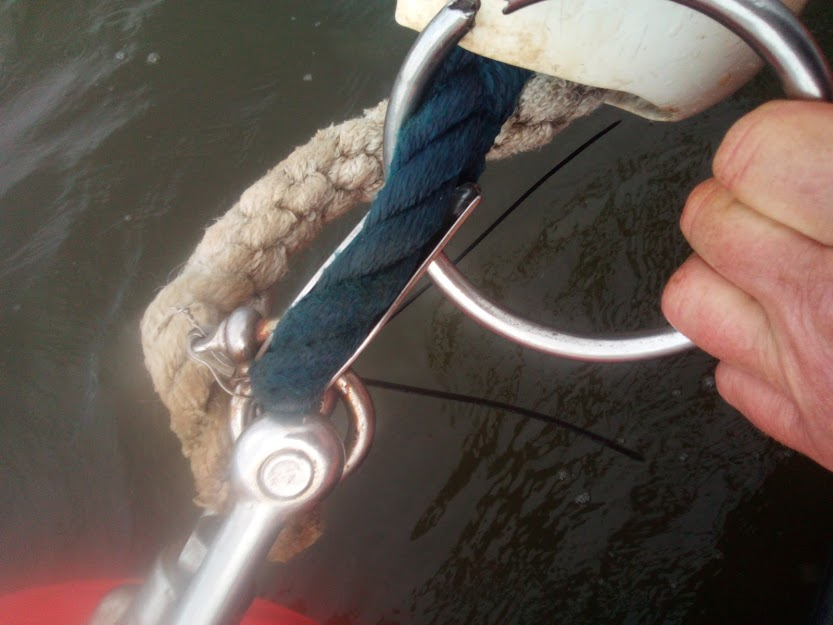Top Gear
Chain Top Gear
Regular Checks
Shackle sizes and Swivels

Previously we have recommended a swivel to prevent lines from twisting. If you use a short, tight line to the buoy the swivel in the mooring chain appears to work all season so a swivel is not required. This also means that you can put two independent lines onto the buoy shackle which eliminates the single point of failure that the swivel introduces. If you do decide to use a swivel, it is critical that both pins are moused or otherwise secure as a failure at this point will be a failure of the mooring (single point of failure). If you are using a swivel, consider using a jaw-jaw swivel not an eye-eye swivel, this eliminates two shackles per line so is safer and cheaper.
The photos show a jaw-jaw swivel (with pins) and an eye-eye swivel (without pins).

If you wish to put a third line onto the buoy it is unlikely that you will be able to attach three shackles to the buoy shackle. Your best option is to attach your third line to one of the shackles that attaches one of your first two lines.
Galvanised shackles and swivels should have their pins greased when they are fixed to the buoy, only a small amount of grease is required but it makes removal at the end of the season possible. Stainless steel components must not be greased.
Useful sources of mooring equipment
Useful sources of mooring equipment include:-
- Handy Straps (www.handystraps.co.uk) – although a web based company they have a unit at Burringdon Industrial Estate in Plymouth and give you even better prices in person.
- Gael Force Marine (based on the fish quay) we use GF for our mooring chain, shackles and swivels.
- Mount Batten Boathouse are convenient, useful in an emergency.
- Force 4 Chandlery at QAB stock most items.
- Marine Bazaar have a stock of items and are particularly useful for protective tubing.
- Bogie Knights at Mutton Cove may or may not have what you require, they are good for 3 strand mooring rope.
- Marine Bazaar and Mount Batten Boathouse will give MBOA members a discount on most items.
Other
An example of a mooring setup with swivel. Note the shackle pins have been moused with wire, the eye-eye swivel could have been a size bigger, but this is sufficient for the smaller boat on this mooring.

This chafing is due to the rope protection not being fixed in the right place, one of the three strands has parted, a new line is required.

Mooring lines badly twisted, either a swivel or shortening of the lines is required.

Missing shackle pin. This pin was not properly moused, on this mooring the shackle pin is moused with wire, but the other swivel pin is not moused.


